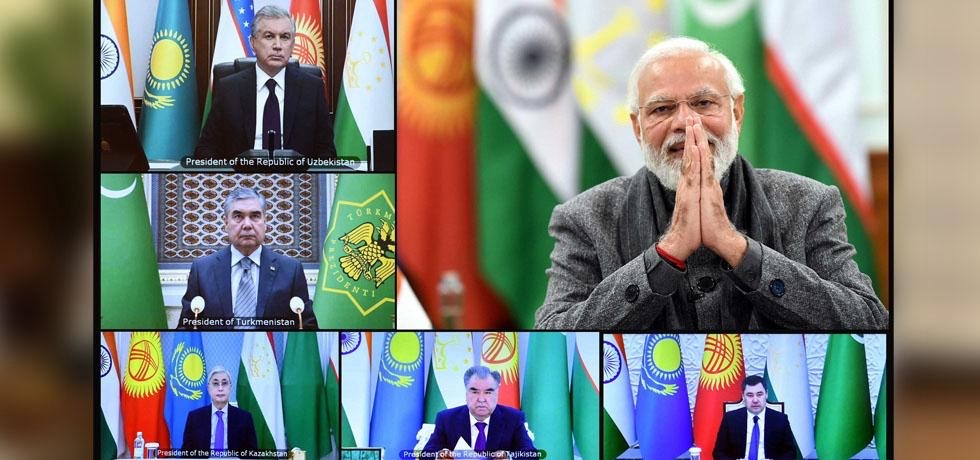India-Central Asia: Fostering Innovation Through Strategic Collaboration in Science, Technology, and Energy
The partnership between India and Central Asian countries in the realms of science, technology, energy, and biotechnology represents a promising frontier of collaboration that builds upon their historical ties while addressing contemporary challenges.
This strategic cooperation has been gaining momentum, particularly following India’s «Connect Central Asia Policy» and Prime Minister Modi’s diplomatic initiatives in the region. In the energy sector, the collaboration between India and Central Asian nations has been particularly noteworthy. Kazakhstan, being one of the world’s largest uranium producers with a 38% share in global output, has emerged as a crucial partner for India’s nuclear energy program. The relationship reached a significant milestone when both countries agreed to a new deal for uranium supply, with Kazakhstan committing to provide 5,000 metric tons of uranium to India during 2015-19. This partnership has been instrumental in fueling India’s nuclear power plants and advancing its clean energy goals.

The cooperation in the hydrocarbon sector has also been flourishing. India’s state-owned Oil and Natural Gas Corporation (ONGC) has made substantial investments in Kazakhstan’s oil sector, acquiring stakes in the Alibekmola and Kurmangazy oilfields in the Caspian Sea region. The establishment of ONGC Videsh’s representative office in Ashgabat, Turkmenistan, further demonstrates India’s commitment to deepening energy cooperation with Central Asian nations. In the field of space technology, India and Central Asian countries have been exploring various avenues for collaboration. India’s expertise in satellite technology and space research has opened up opportunities for knowledge sharing and joint projects. The potential for cooperation in remote sensing, satellite communication, and space exploration presents a promising avenue for mutual growth and technological advancement.
Biotechnology has emerged as another crucial area of partnership. Indian pharmaceutical companies have established a strong presence in Central Asia, with major players like Ranbaxy, Dr. Reddy’s Labs, and Lupin Laboratories leading the way. The joint venture between India’s Ajanta Pharma and Turkmenistan’s Ministry of Health, known as Turkmen Derman Ajanta Pharma Limited (TDAPL), stands as a testament to successful collaboration in the pharmaceutical sector, meeting approximately half of Turkmenistan’s pharmaceutical needs. Scientific research and technical cooperation have been strengthened through various institutional mechanisms. The establishment of the Turkmen-Indian Industrial Training Centre, with an investment of $0.5 million, has been instrumental in training Turkmen citizens in manufacturing skills, business practices, and computer technology. The Indian Technical and Economic Cooperation (ITEC) programme has facilitated knowledge exchange and capacity building in various technical fields.
The collaboration extends to information technology as well. India’s expertise in IT services has found receptive partners in Central Asian countries looking to modernize their technological infrastructure. The development of IT parks, e-governance initiatives, and digital infrastructure projects has created new opportunities for cooperation and knowledge sharing. Furthermore, the partnership in renewable energy technologies is gaining traction. With Central Asian countries showing increasing interest in sustainable energy solutions, India’s experience in solar and wind energy development presents opportunities for technological collaboration and joint research initiatives.
The educational cooperation in scientific fields has also been strengthening. Through various exchange programs and joint research initiatives, academic institutions from both regions are working together to advance scientific knowledge and technological innovation. This academic partnership helps in building a strong foundation for future scientific collaboration. Looking ahead, the potential for expanding this cooperation is immense. The recent agreements signed during high-level diplomatic visits have laid the groundwork for deeper collaboration in emerging technologies, including artificial intelligence, cybersecurity, and biotechnology. The establishment of joint working groups and research centers further facilitates the exchange of expertise and resources.
The India-Central Asia collaboration in science, technology, and energy sectors represents a win-win partnership. For India, it provides access to crucial energy resources and new markets for its technological expertise. For Central Asian countries, it offers opportunities to diversify their technological partnerships and benefit from India’s experience in various scientific fields. This multifaceted cooperation is not just about technological advancement; it’s about building sustainable partnerships that contribute to the development and prosperity of both regions. As these partnerships continue to evolve and strengthen, they will play a crucial role in shaping the technological landscape of Asia and contributing to global scientific advancement.
The success of these collaborative initiatives demonstrates the potential for further expansion of partnerships in emerging fields. As both regions continue to prioritize technological advancement and scientific research, their cooperation will undoubtedly lead to new breakthroughs and innovations that benefit not just their respective nations but the global scientific community as a whole.
Ankit K, Asst Professor in International Relations, National Defence University, Gujarat India

 Поддержать
Поддержать
 Smart
Smart  Бизнес
Бизнес  Культурная среда
Культурная среда  Общество
Общество  Политика
Политика  "Законы XII таблиц"
"Законы XII таблиц"  Досье и мифы
Досье и мифы  Асар в Украине
Асар в Украине 


Комментариев пока нет